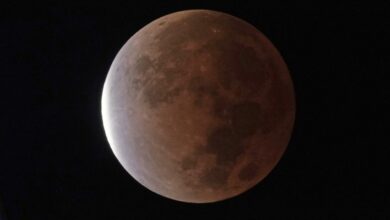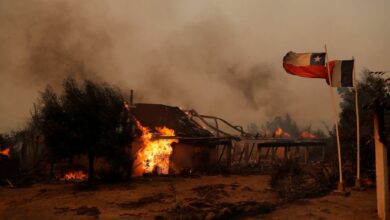
When some of the world's leading astronomers scaled a frosty, Chilean peak in mid-November to break ground on a state-of-the-art, US$1 billion telescope, they were stunned by an unexpectedly hazy glow.
On the floor of the Atacama Desert, some 1,700 meters (5,600 ft) below the planned Giant Magellan Telescope, new streetlights lining Chile's north-south highway shone brightly.
To the naked eye, the Milky Way still looked sharp. But to a sensitive, state-of-the-art telescope scouring the deepest reaches of the known universe, the new ground light could be blinding.
"It's like putting an oil rig in the middle of the Great Barrier Reef," said Guillermo Blanc, a University of Chile astronomy professor, who first saw the lights at the opening.
"It's insane," he added. "Why are they trying to light up the Andes?"
In the past 30 years, Chile has carved out a niche as the global hub for observational astronomy. More than a dozen major research telescopes have already been built, and by 2020, the South American country will boast around 70 percent of the world's astronomical infrastructure.
The low humidity and smooth airflow in northern Chile's Atacama Desert create unrivaled visibility for the high-tech telescopes that scientists hope will shed light on the formation of the universe and the possibility of extraterrestrial life.
But scientists say light pollution has increased sharply in the barren Atacama as mining cities swell and tourist numbers mushroom.
"There is an ongoing concern that ground-based astronomy is at risk long-term. There just are not that many pristine sites left," said Patrick McCarthy, the president of the Giant Magellan Telescope, which will be constructed at the Las Campanas Observatory in the southern Atacama.
"As these cities and highways grow, you start to wash out the faintest objects. The thing is, the faintest objects are the reason we're building these telescopes in the first place."
Discovery in peril
Just over 100 km southwest of the Giant Magellan Telescope, the populations of Coquimbo and La Serena ballooned by almost 70 percent from 1992 to 2012. Nightclubs, sports arenas and sprawling suburbs all spew bright, artificial light into the night sky.
Scientists at the Gemini Observatory, located on an ocher mountaintop over 60 km southeast of those cities, say increasing light pollution has already had a measurable effect.
"You can already detect streetlights at certain wavelengths," said Rene Rutten, an astronomer at Gemini.
"If you were to stand up here on a dark, moonless night, you would see urban areas in the distance, and even what you can see just by the naked eye is very, very significant."
The expansion of nearby Route 41 linking La Serena to Argentina is another threat, said Chris Smith, Chile mission head for a Washington-based research group currently constructing the $665 million Large Synoptic Survey Telescope adjacent to the Gemini.
If the proper measures are not taken, he estimated, creeping light pollution could materially degrade the region's skies in as little as a decade.
There are few official records of light pollution in Chile and measuring it quantitatively over time is difficult. However, astronomers say artificial glow has increasingly bled from the horizon higher into the night sky in recent years.
Many scientists are quick to add that Chile's skies still allow for excellent observations. But they complain that enforcement of toughened ground lighting regulations has been spotty.
To take up the slack, they are working directly with communities to build light fixtures that radiate only downward and at certain spectra.
While most nearby towns have been receptive, astronomers say, some business lobbies complain of the potential impacts on industry, while local authorities have expressed safety concerns about darker streets.
Scientists have also asked the United Nations to label the region a World Heritage Site, a measure they hope will maintain the inky skies above.
"We're trying to answer very fundamental questions: How did the universe begin? How did the sun form?" asked the University of Chile's Blanc.
"That's something that belongs to humanity. And we think we have a duty, as a country, to protect it."




